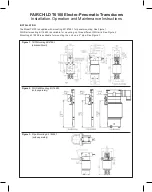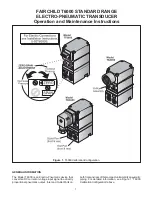
Installation and Reference Guide
Mini-GBIC and SFP Modules
Wavelength means the optical wave band for transmission of light signal. Currently, the commonly used XFP optical
modules have three centre wavelengths: 850 nm, 1310 nm and 1550 nm. Usually, the wave band of 850 nm is for
short-distance transmission and the wave bands of 1310 nm and 1550 nm are for long-distance transmission.
Optical Fiber Type
Optical fibers are classified into two types: single-mode and multimode fibers according to the transmission mode of light
in fibers.
A multimode fiber (MMF) has a larger core and transmits light of various modes. But it has a higher modal dispersion. The
modal dispersion grows with the increase of transmission distance. The transmission distance of multimode fibers is
associated with the transmission rate, core diameter, and modal bandwidth.
A single-mode fiber (SMF) has a smaller core and can transmit one mode of light. Therefore, it has a lower modal
dispersion and is applicable to remote communication.
Connector Type
Optical fibers are joined by optical fiber connectors to form fiber jumpers. A fiber jumper is connected to optical modules
through an optical fiber connector, so that the optical channel is detachable for the convenience of debugging and
maintenance of the optical system. Fiber connectors are in many types. The commonly used lucent connectors (LCs) are
shown in Figure 1-5 and Figure1- 6
Figure 1-5 Single-core LC Connector
Figure 1-6 Dual-core LC Connector
DDM
Digital Diagnostic Monitor (DDM) is widely used in optical modules to dynamically measure the temperature, intensity of
transmitted and received light, voltage, and laser bias current of the module. You can run commands to get the monitoring
result in the host system that supports display of DDM information.
Intensity of Transmitted Light
Intensity of transmitted light refers to the optical output power transmitted from the optical module. The unit is dBm.











































